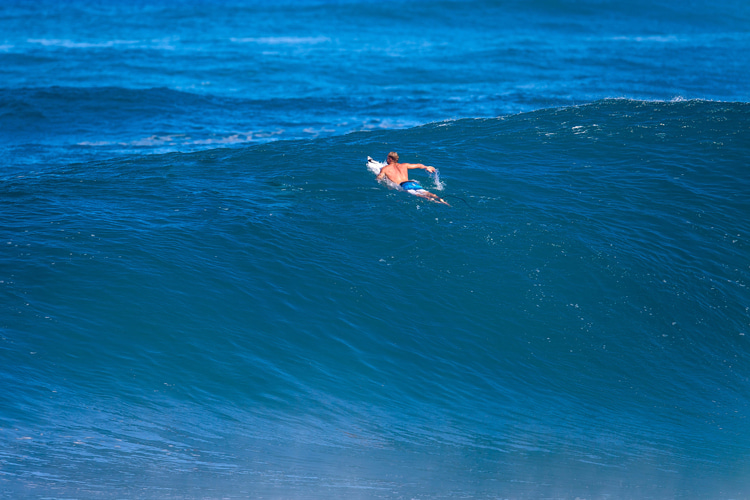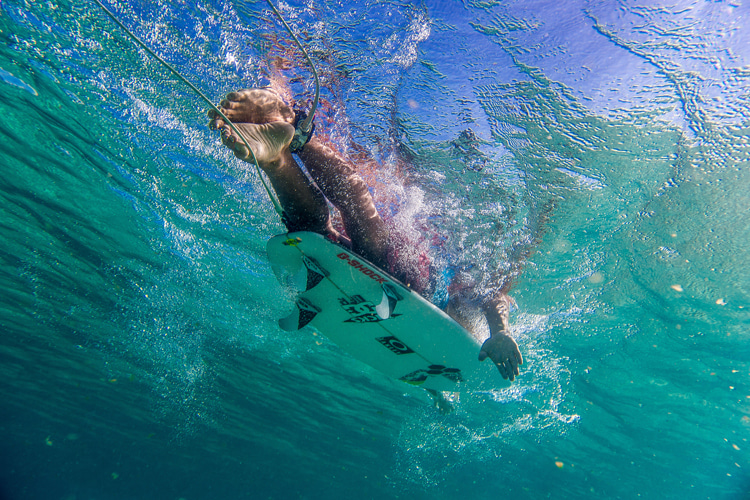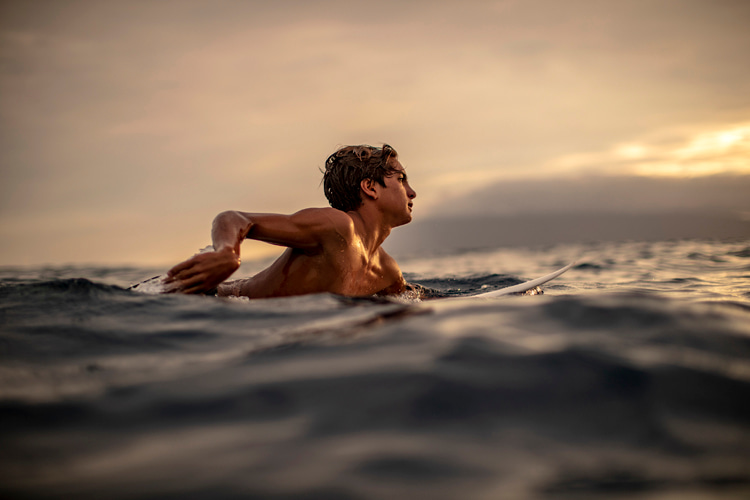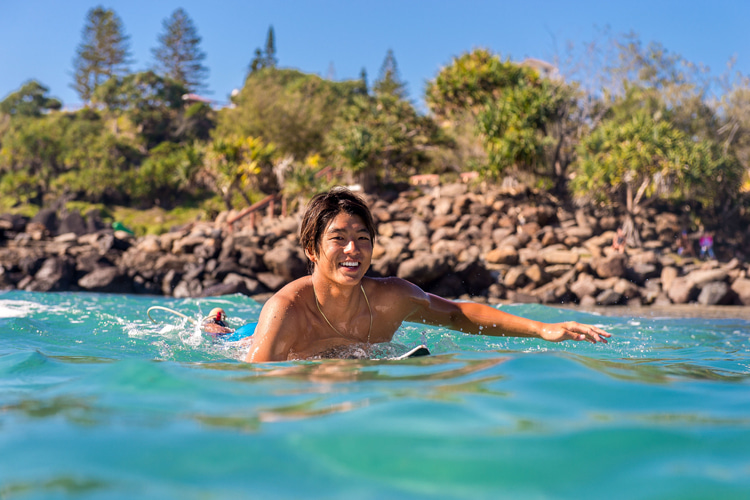Paddling is a fundamental technique in surfing that provides forward motion. You'll never reach the lineup or ride a wave if you don't know how to paddle.
It allows us to get to the peak, move around to find a better position, triangulate, and catch waves.
Make no mistake - the better you paddle your surfboard, the better surfer you'll become.
Ultimately, when you're about to catch a wave, the goal of paddling a surfboard is to match that wave's speed.
In other words, it's all about maximizing propulsion and minimizing drag and resistance.
Paddling is probably the first thing you need to learn after finding the right balance lying on a surfboard.
If you're too far back, the surfboard won't place or get any speed, and you'll end up bogging.
On the other hand, if you're too far forward, there will be too much weight near the nose, and the board will pearl or dive underwater.

Like Swimming
Proficient paddling will also enable you to spend more time in the water and get more and better waves.
Someone once said, "Surfing is 70 percent paddling, 20 percent waiting for waves and getting in position, and just 10 percent being up and riding."
And that is why surfers often overdevelop their upper body muscles.
If you're a good swimmer, then paddling resembles the front crawl technique - the only difference is that, in surfing, there's a flat surface below your body.
Once you get used to being correctly centered on the board - not too far forward and not too far backward - it's time to start moving.
Ideally, the surfboard should rest flat on the water, with the nose slightly above the surface and your toes barely hanging off the tail.
You might need an hour or two to feel comfortable with the prone position, but it really is only a matter of time and practice.

Surfboard Paddling 101
Now, let's start paddling toward the surf zone. Here's what you're going to do:
- Find a good equilibrium in the middle of the board, making sure the stringer is running along the center of your body;
- Raise your chest, arch your back, and look forward;
- Keep your legs close together and your feet out of the water;
- Slightly cup your hands, leaving a slight space between fingers;
- Keep your shoulder high as your hand penetrates the water;
- Bend your arm when reaching forward for the stroke;
- Complete a fluid stroke with one arm by pushing underwater smoothly and stretching all the way out and back;
- The push underneath the water should produce an S-curve movement for maximum thrust;
- As the first arm relaxes and recovers, slightly shift your body weight to the opposite side and prepare your other arm for another stroke;
- Repeat the stroke movement with the other arm;
As a wave starts appearing on the horizon, beginners should begin paddling as early as possible to build up their speed.
When the wave picks you up from behind, intensify the paddling movements to match the speed of the unbroken wave.
Remember that the greater the surface area - hand, forearm, and arm - pushing water, the faster you'll paddle.
But you don't need to splash water.

Fine Adjustments
The two last strokes are often critical - you'll either catch the wave or be left behind.
The perfect paddling movement will see both arms working gracefully like a windmill and the board moving steadily across the water.
One of the common mistakes beginner surfers make is stroking both arms at the same time.
Although that is a technique adopted in surfing's early days, it is not the fastest way to paddle a surfboard and catch more waves.
"The most frequent reason somebody misses a wave is that they don't paddle hard enough for it," three-time world champion Andy Irons once stated.
"You have to stroke like crazy. Get your board moving as fast as possible in the water to match the speed of the wave moving through the water towards you."
A good and efficient paddling technique will result in a slight body-and-surfboard, side-to-side movement, a natural consequence of the stroke cycle.
In swimming's forward crawl, the recovering arm's shoulder is also always higher than the pushing/pulling arm.
After the first two to four sessions, you'll feel exhausted, and your upper body muscles will be sore for a few days.
But the body pain disappears soon after.
The paddling technique precedes the pop-up/take-off movement, another critical moment in surfing.
